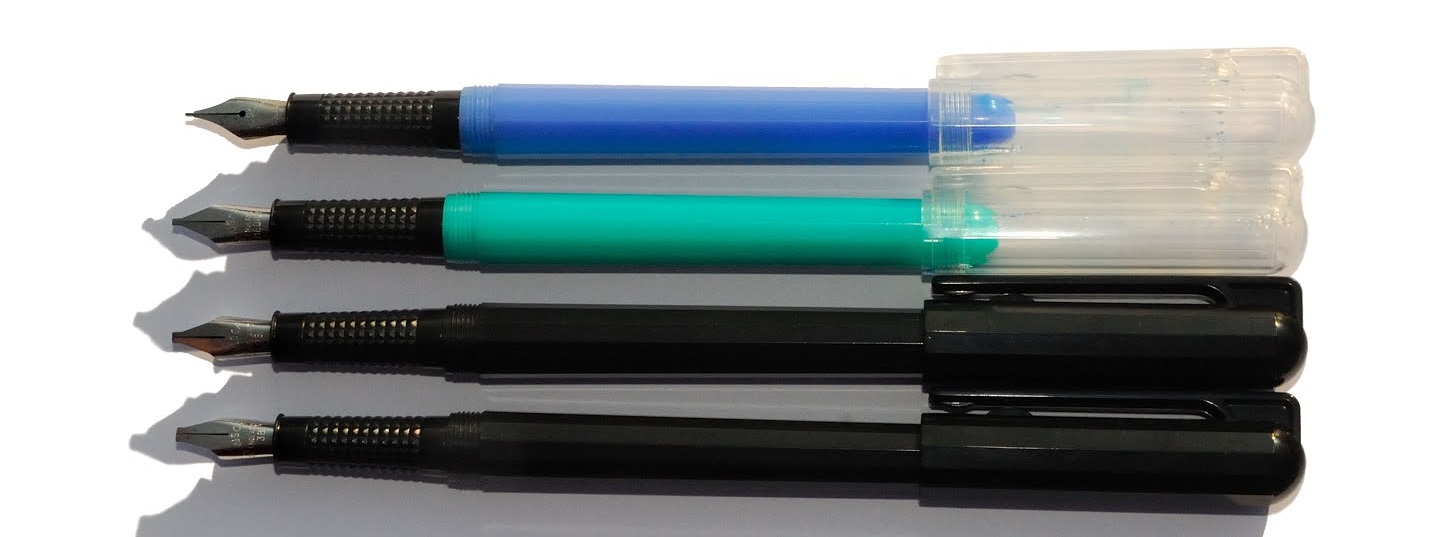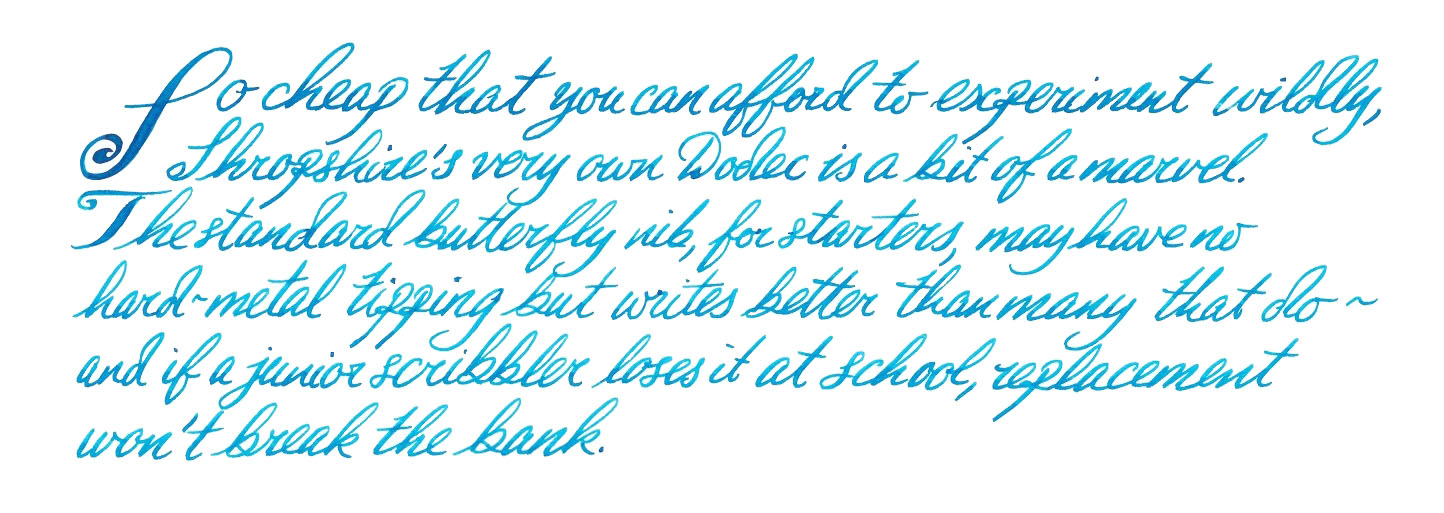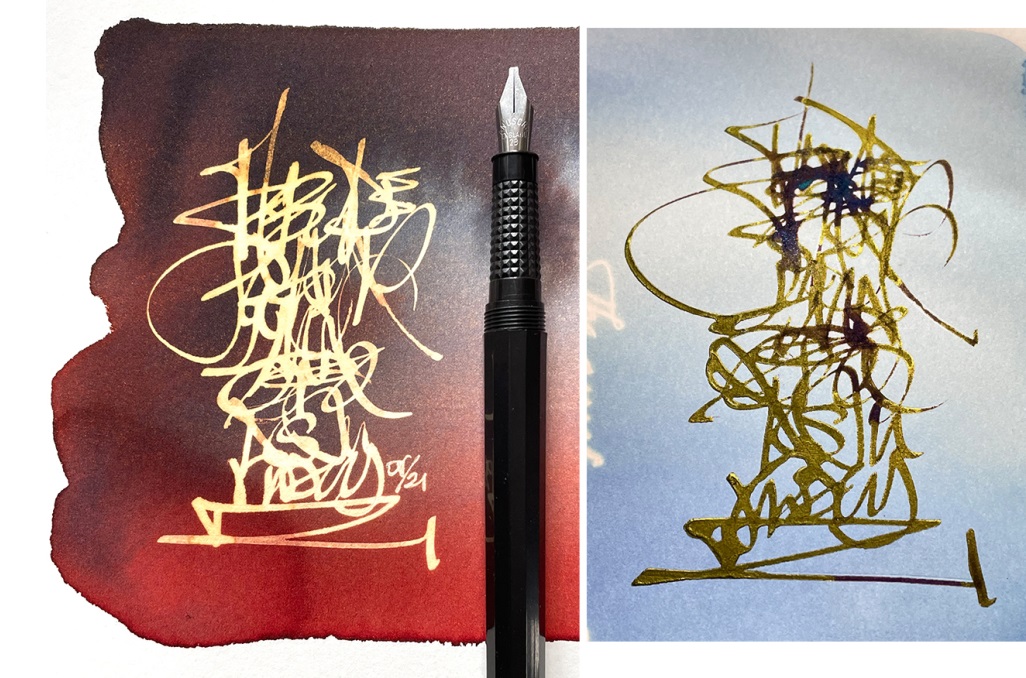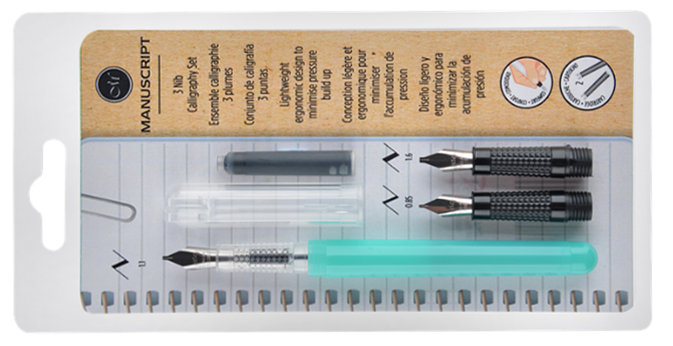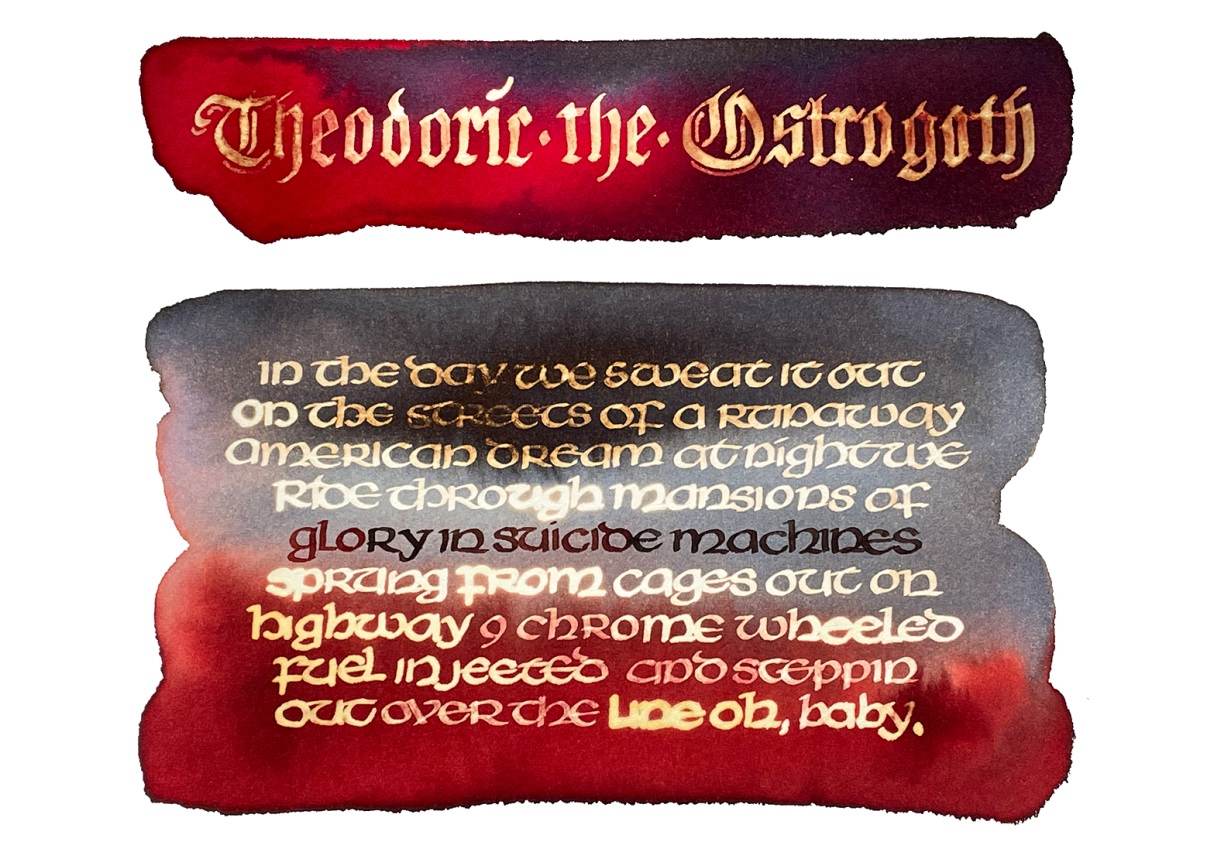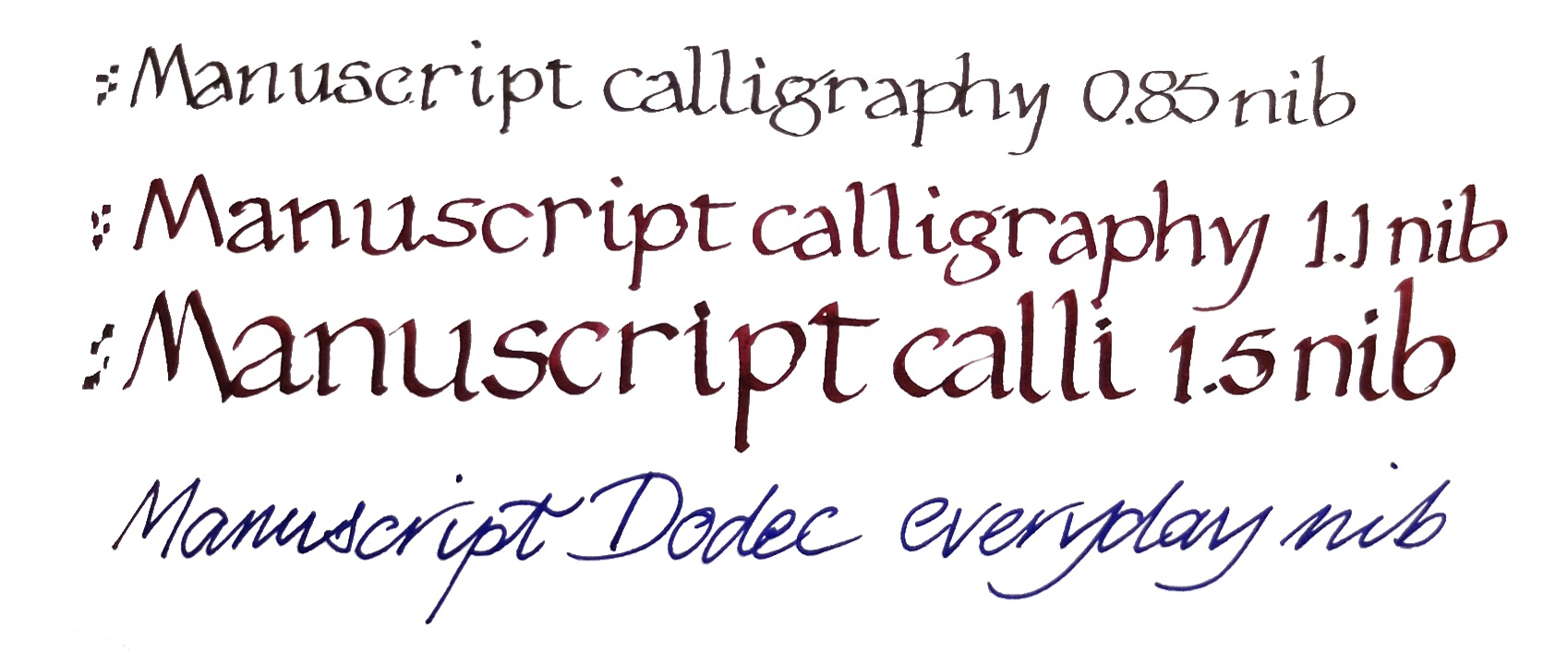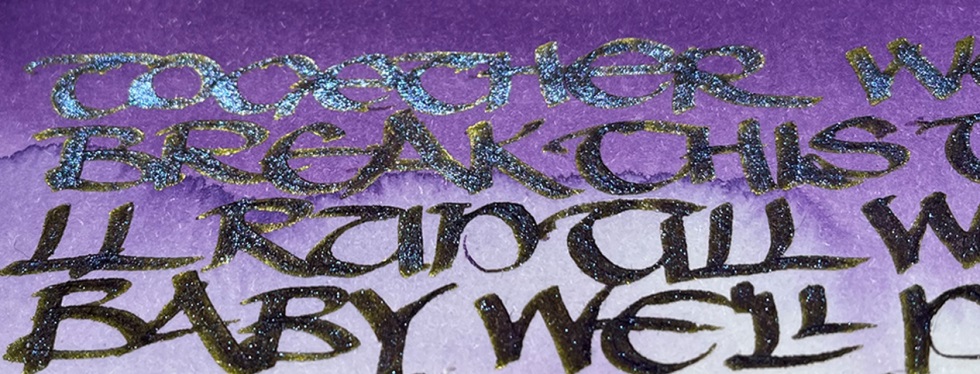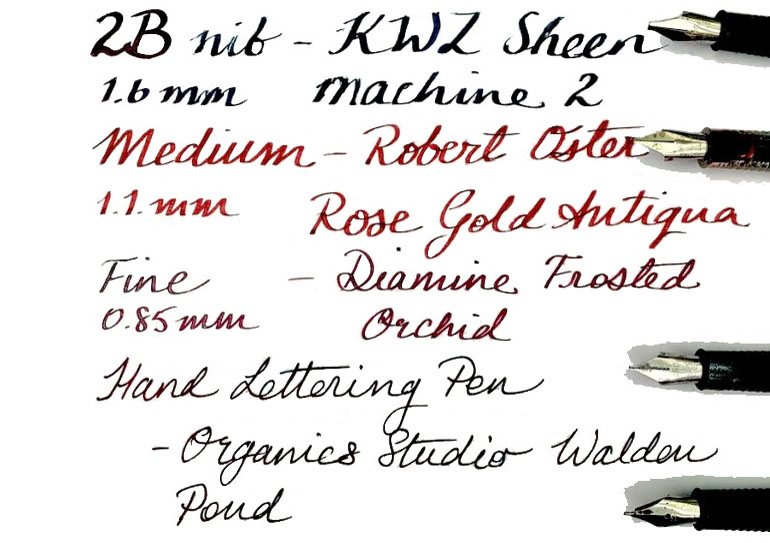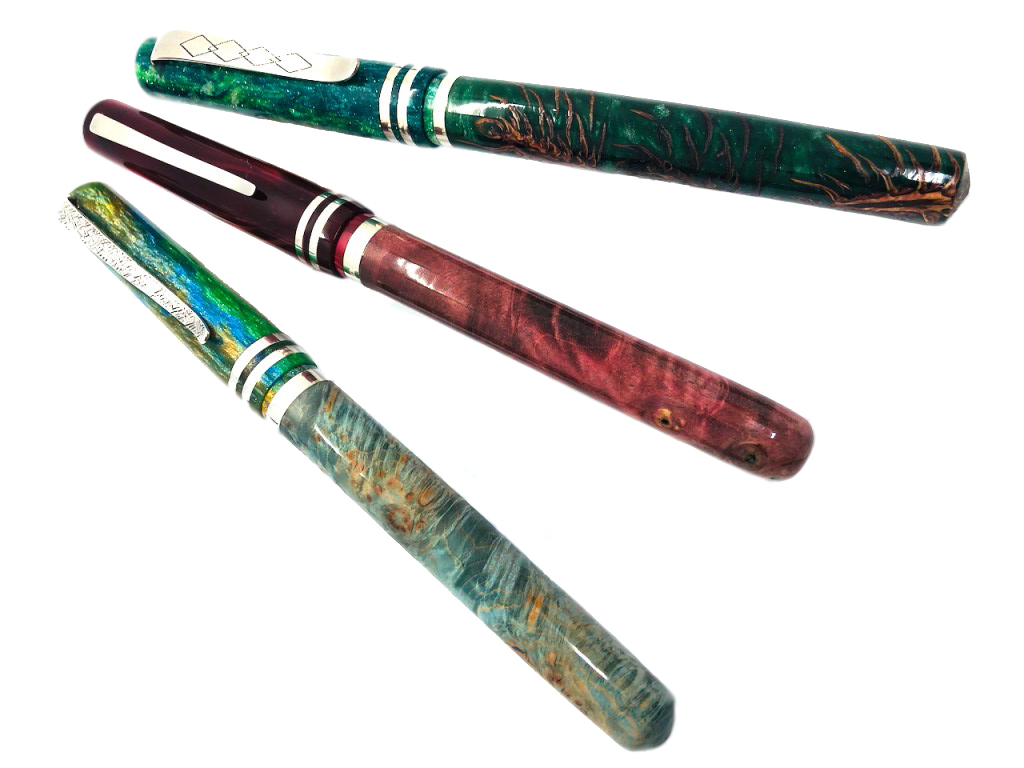
A little bit of history John Sanderson might not yet be a name widely known in pen circles, but he has been turning pens for more than forty years, combining extensive knowledge of engineering (as a former metal and print press engineer) and a life long passion for working with wood, with impressive results.
For this meta-review, he supplied seven pens in total: three ‘oversize’, and four more traditional sizes, in a wide breadth of materials, nibs, trims and designs.
A custom pen maker, John can pretty much design whatever you want: from a tiny clipless pocket midget to a huge heavily adorned behemoth, and anything in between. Reviewing such a broad range could be risky, but John was up for putting his designs to the test!
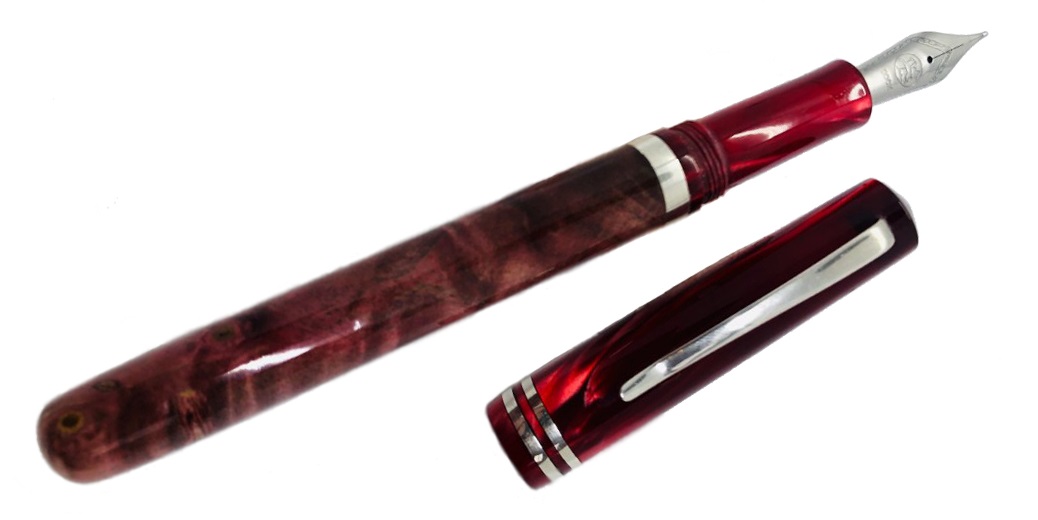
How they look These are beautiful to gaze at, with clean lines, interesting combinations of materials and colours and high quality, handmade argentium silver trim. Designs we sampled included a huge diamondcast oversize pen with a mid-century modern “sci-fi” theme clip, through to slender combinations of wood burls (including one made of pine cone hearts suspended in resin) with complementary acrylic resin sections.
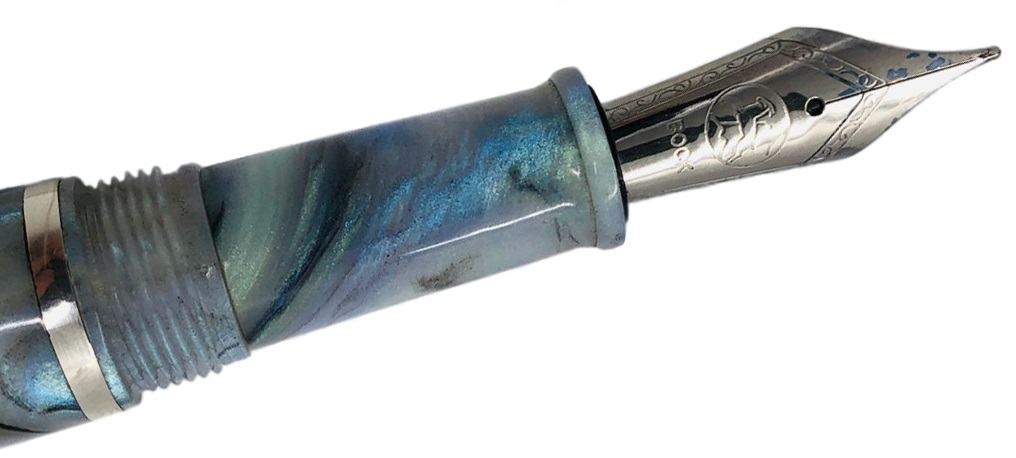
How it feels John’s pens were all well balanced, light (often in spite of their size), and comfortable to hold for long writing periods. There was a broad range of barrel diameters, from slender 10mm right up to jumbo 14-15mm sections, but most were felt to be comfortable and sections were ergonomically designed.
The threads were, for the most part, smooth and unobtrusive, and the one grip section which a reviewer found a touch uncomfortable could doubtless have been returned for a bit of smoothing-out if needed.
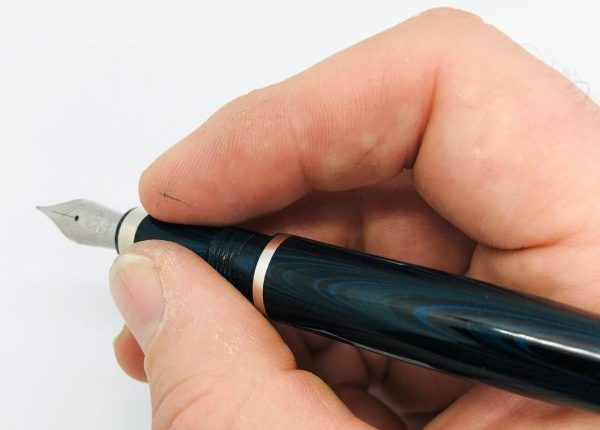
How it fills All the pens were supplied with standard international Schmidt K2 style cartridge converters. These are easy and convenient – and of course there are also cartridges available, for barbarians.
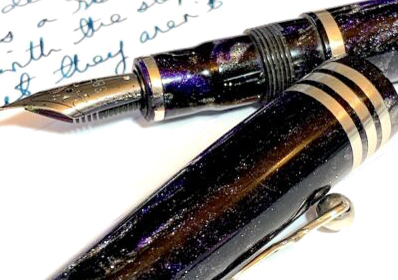
Crucially, how it writes… These pens were supplied with either Bock or Jowo steel nibs for demonstration purposes, but being customisable, gold, titanium, platinum etc. would all be options (at a price) and John can also accommodate Pelikan nibs and the like into his section designs.
This means all the pens we tried were smooth, comfortable writers with ink flow that is typical of standard Bock and Jowo nibs. As we expect to use pens, not just look at then, this is all good news.

VFM Prices for a custom pen by John start at around £100 and go up from there towards £220 – depending on design, choice of material, trim features and nib choice. This means these are an ‘investment’, but with such an experienced maker, if the end product isn’t quite what you wanted, it can be adjusted and rebuilt until it is.
Value on a custom pen is hard to judge, but these ooze quality and the reviewers all like the very bright, shiny, tarnish-resistant argentium silver which really sets the trim levels apart from others.
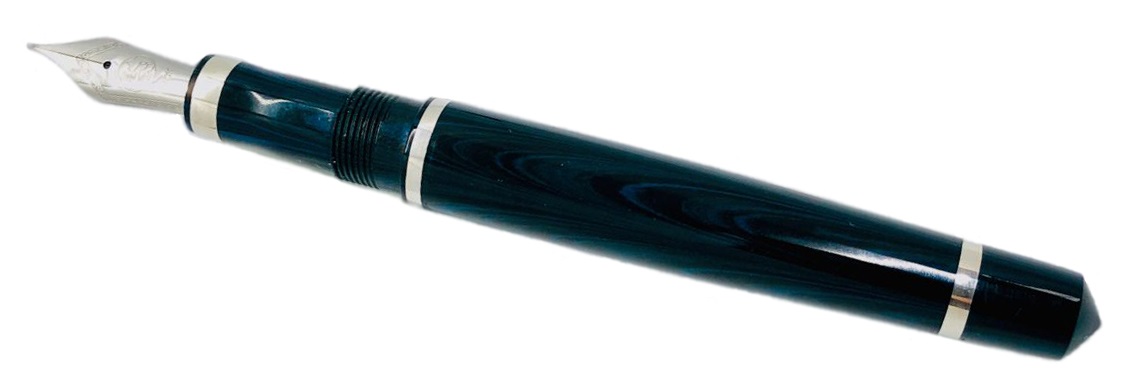
The only way is ethics John is open and transparent to deal with. There are no upfront costs and pens are only paid for once received and tested by the customer; this is fair and straightforward and makes procuring a custom pen through John an enjoyable and guilt-free process.
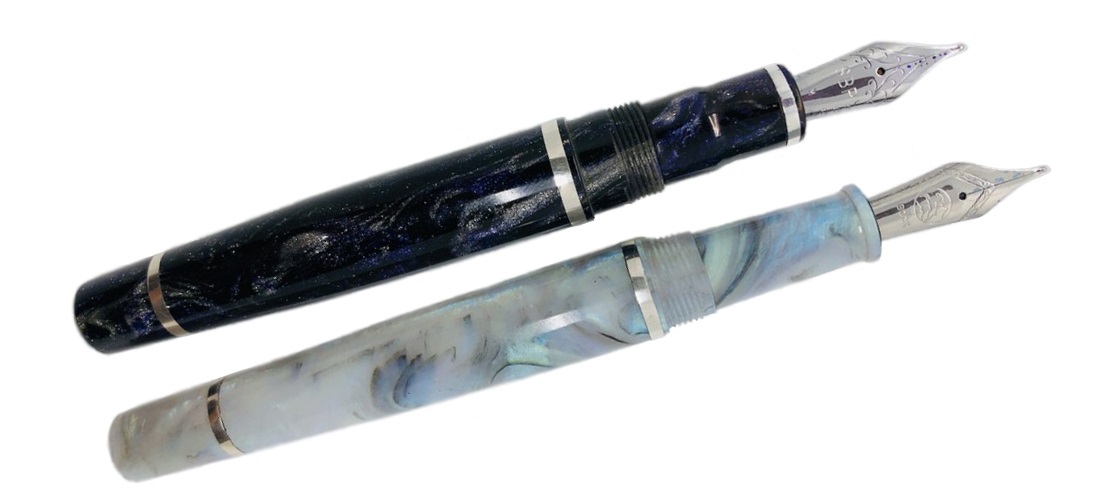
Our overall recommendation All our reviewers felt these pens oozed quality, showed a huge breadth of skill with materials, metalwork and design and were very tempting – at least one of us has independently purchased a Silver Burl since reviewing.
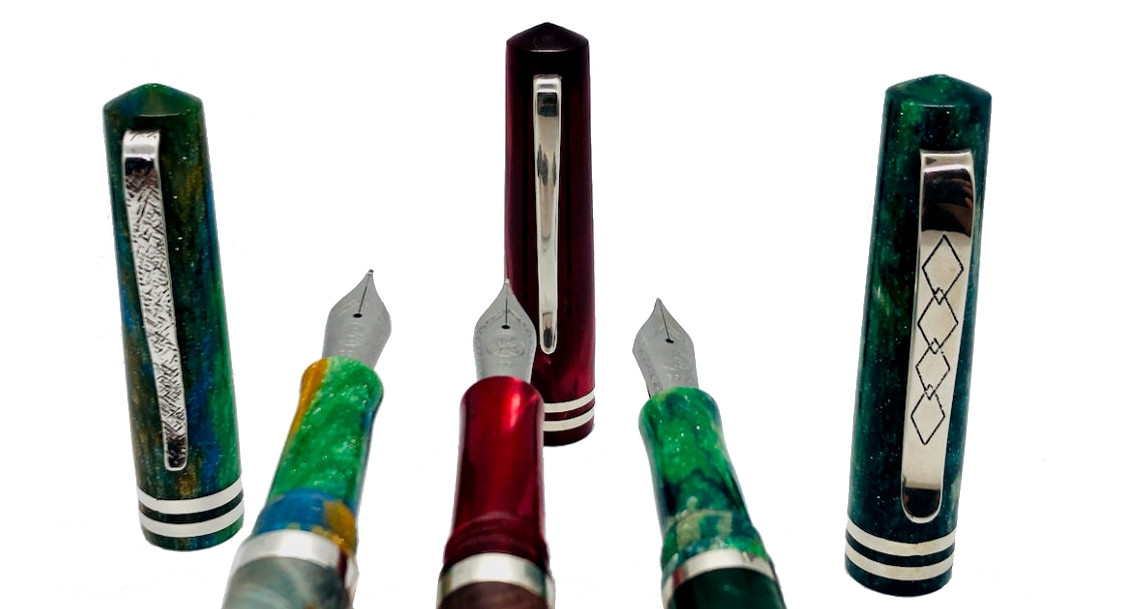
Where to get hold of one : Direct from the maker at https://silverburlpens.com/
This meta-review references:
Thanks to John himself for lending us such a special set of his creations.
